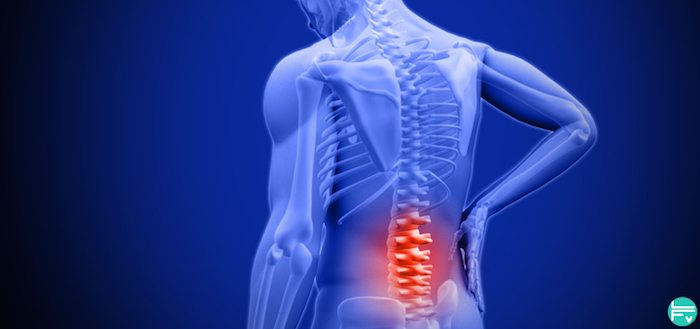
Walking is relatively easy to do and one of the most overlooked ways that you can help relieve and prevent future flareups of lower back pain.
Two specific and direct benefits of adding a regular walking routine to your lower back treatment program are highlighted below.
Walking Strengthens the Muscles That Support Your Spine
Your trunk, core, and lumbar (lower back) muscles play a vital role in maintaining the stability and movement of your lower back. These muscles can become deconditioned and weak from a sedentary lifestyle, causing malalignment of the spine. Over a period of time, there may be an increase in muscular weakness, fatigue, injury, and pain.1 The overall mass of your spinal muscles may also reduce.
When you walk, the health of your back muscles is improved in the following ways:
- Increases blood flow. Decreased physical activity can cause the small blood vessels of your spine to become constricted, reducing blood flow to the spinal muscles. Walking helps open up the blood vessels, increasing the supply of oxygen and nutrients to these muscles.
- Flushes out toxins. Muscles produce physiologic toxins when they contract and expand. Over time, these toxins can accumulate within the lower back muscle tissues and cause stiffness. Walking helps flush out these toxins and improve flexibility.
These factors combine to help build strength in the muscles of your lower back, adding to the strength and integrity of your lower back.
Walking Increases Flexibility in Your Lower Back
Lack of physical activity can cause the muscles and joints in your lower back and hips to become stiff. This stiffness creates increased pressure on the lumbar spine (lower back), altering its normal curvature.
Walking increases your flexibility by stretching the muscles and ligaments in the back, legs, and buttocks. When you walk, specific muscles, such as your hamstrings, erector muscles of the spine, and hip flexor muscles are activated and stretched. The flexibility of your spinal ligaments and tendons is also increased, improving the overall range of motion in your lower back.
Additional Health Benefits of Walking
While walking can help improve function in your lower back, it also has other health benefits. Committing to a regular walking program may help:
- Reduce and/or maintain an optimal weight
- Keep blood pressure under control
- Improve the levels of total cholesterol
- Decrease anxiety and depression
- Reduce the risk of heart disease and dementia
Walking also helps increase the production of endorphins (natural pain-inhibiting hormone), decreasing the overall perception of pain.
Tips to Prevent Lower Back Pain While Walking
Your walking-pace and duration depend on your level of tolerance. Follow these tips if you have chronic lower back pain:
- Start with a short, 5 to 10-minute walk every day and gradually work your way up. You may also use a treadmill or an elliptical machine based on your preference.
- If regular walking is painful, try walking in a shallow pool. The buoyancy of water may provide enough relief to allow you to complete your walking exercise.
- Always use correct posture while walking by keeping your spine naturally curved. Your shoulders must be relaxed with your head balanced on top of your spine (and not flexed forward).
The key to any walking program is to start right away. Regular walking can have immediate as well as long-term effects in improving the health of your lower back tissues, restoring function, and preventing pain.
Precision Pain Care and Rehabilitation has two convenient locations in Richmond Hill – Queens and New Hyde Park – Long Island. Call the Richmond Hill office at (718) 215-1888, or (516) 419-4480 for the Long Island office, to arrange an appointment with our Interventional Pain Management Specialist, Dr. Jeffrey Chacko.













